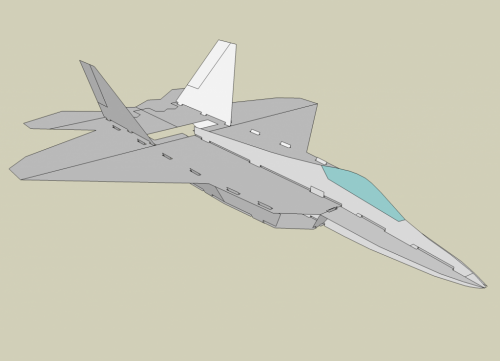I'm building three models at the moment for RC slope soaring. They are the F35, F22 and X23. As mentioned previously on the list I'm trying out cutting the fuselages in 50mm EPP foam slices on a computer driven hot wire.
I have a couple of test cuts of the F35 fuselage done already (although I am not sold on my CAD work accuracy for this model) and am working up the F22 and X23 in CAD.
My question to the list (for both modellers and real life engineers) is this:
Where the hell is the centre of gravity calculated for these weird wing shapes? Does anyone have an idea? Do you average the chord and put it at a third of that? Or is there some sort of (more accurate) way of working this out?
Regards
Marty
I have a couple of test cuts of the F35 fuselage done already (although I am not sold on my CAD work accuracy for this model) and am working up the F22 and X23 in CAD.
My question to the list (for both modellers and real life engineers) is this:
Where the hell is the centre of gravity calculated for these weird wing shapes? Does anyone have an idea? Do you average the chord and put it at a third of that? Or is there some sort of (more accurate) way of working this out?
Regards
Marty

